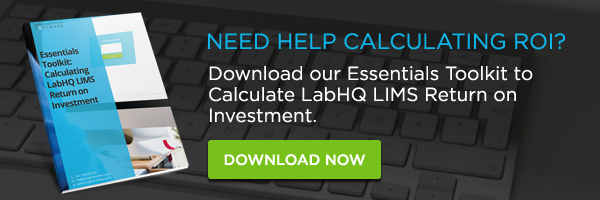
From our experience of deploying LIMS systems within multiple facilities, we have compiled this list of the best LIMS features that have given the greatest improvements on productivity, and therefore, the greatest return on investment value to laboratories.
Integration
A laboratory is full of equipment which is used to generate test results. Creating seamless data transfer between your equipment and LIMS gives the greatest improvement on productivity. By integrating equipment items with LIMS, you can immediately save on time taken to manually transcribe results into LIMS, as well as saving time required to check for transcription errors.
Most modern equipment in laboratories have associated firmware or software compatible for integration. Most LIMS providers can help you configure your system to ensure data is transferred to the correct fields for each test executed.
Reporting
The manual compilation of reports is one of the most time-consuming and tedious tasks. Whether you’re creating a formal Certificate of Analysis or Annual Product Quality report, each test result and data point needs to be double-checked, and in some cases independently reviewed, before it’s approved and issued.
Data reliably and securely stored in a LIMS is easily reportable. Most LIMS have a customisable reporting feature that allows you to design beautiful and professional looking reports. Once you’ve designed and validated the report template, there should be no need to check the presentation of your data each time you generate a report. The nature of this feature is to accurately and reliably present your data on the report each time you click the button.
Specifications
If you’re a lab that tests products against specification, this is a great time-saving feature. By managing product specifications within LIMS, you can check test results for compliance as soon as they are entered in the system. If the test results are out of specification, you can be proactive and investigate the issue sooner. A comprehensive lab investigation requires time and care. Therefore, alerting analysts at the earliest point possible will allow sufficient time to complete investigations and continue to meet turn-around times.
Sample Tracking
Knowing where a sample is in the testing process, how many tests are outstanding, and projected completion date helps with workload management. Some LIMS systems provide a dashboard view that simply illustrates sample progress. This could be depicted using a traffic-light system or a percentage completion progress bar.
Highlighting samples that hold open investigations also help users to identify and action higher priority samples. In addition, sample ‘actual’ turnaround times against ‘contracted’ turnaround times can be compared to produce laboratory efficiency data. This is very useful for identifying areas for improvement or showing how great your laboratory analysis process already is!






